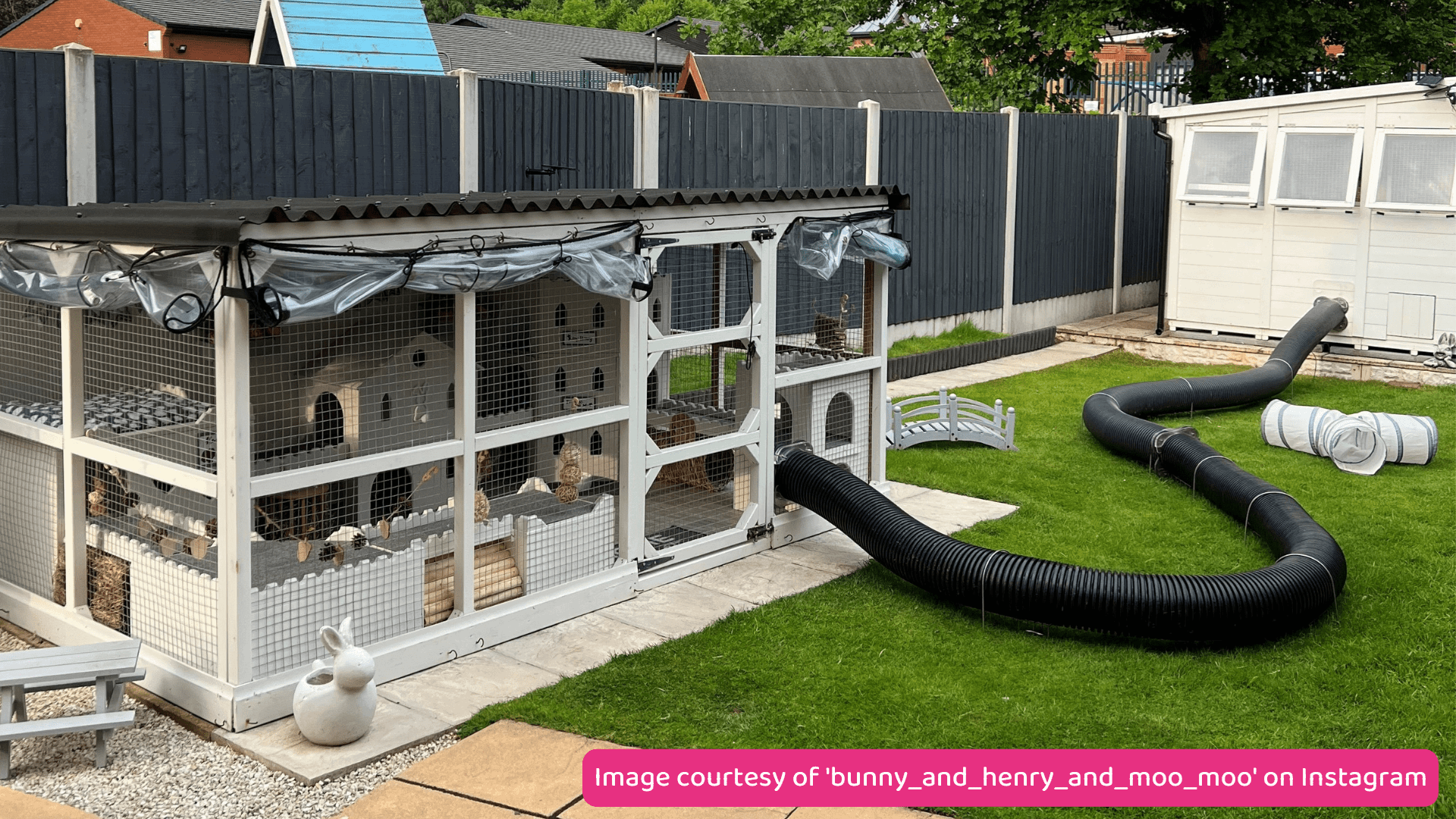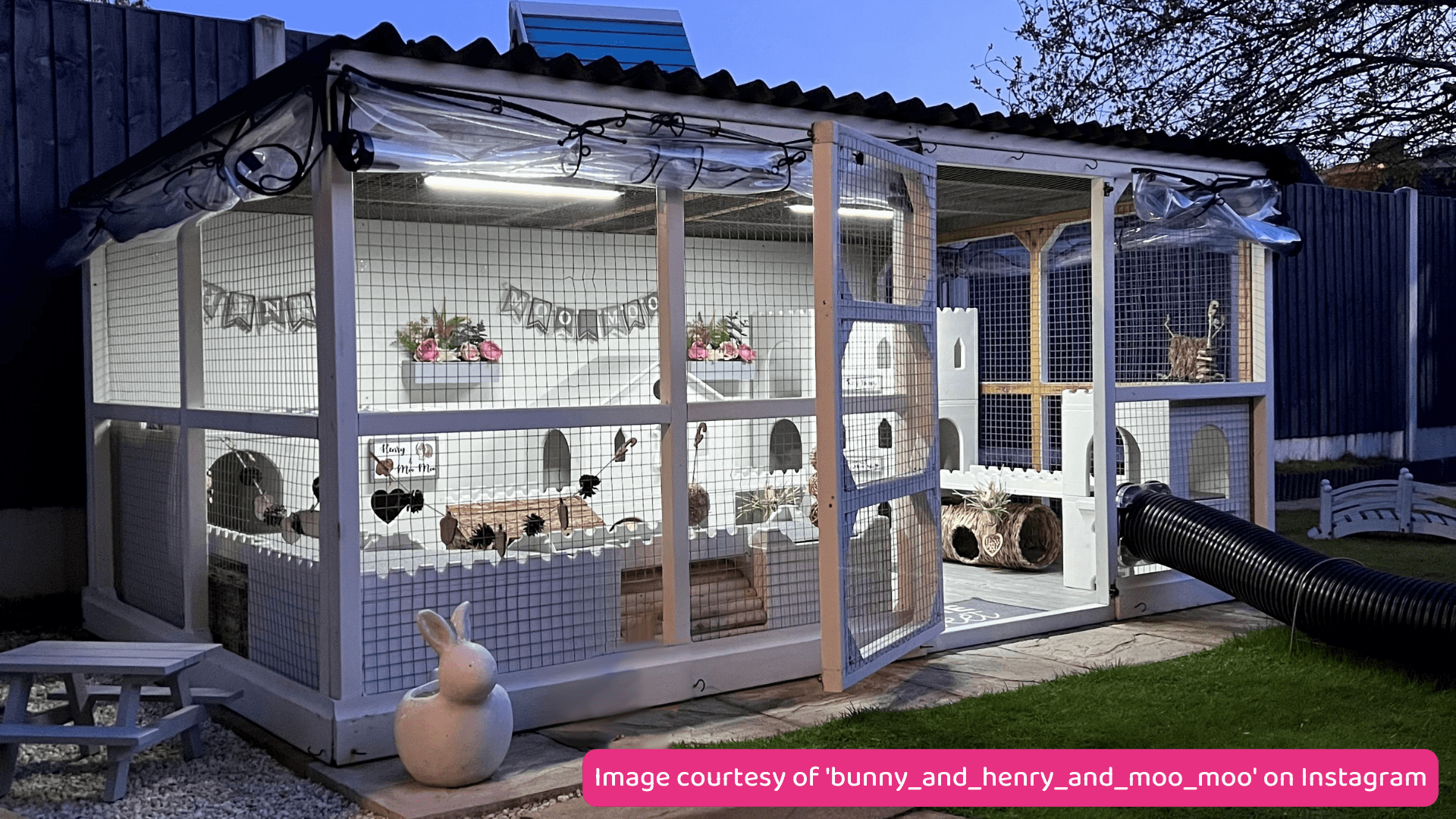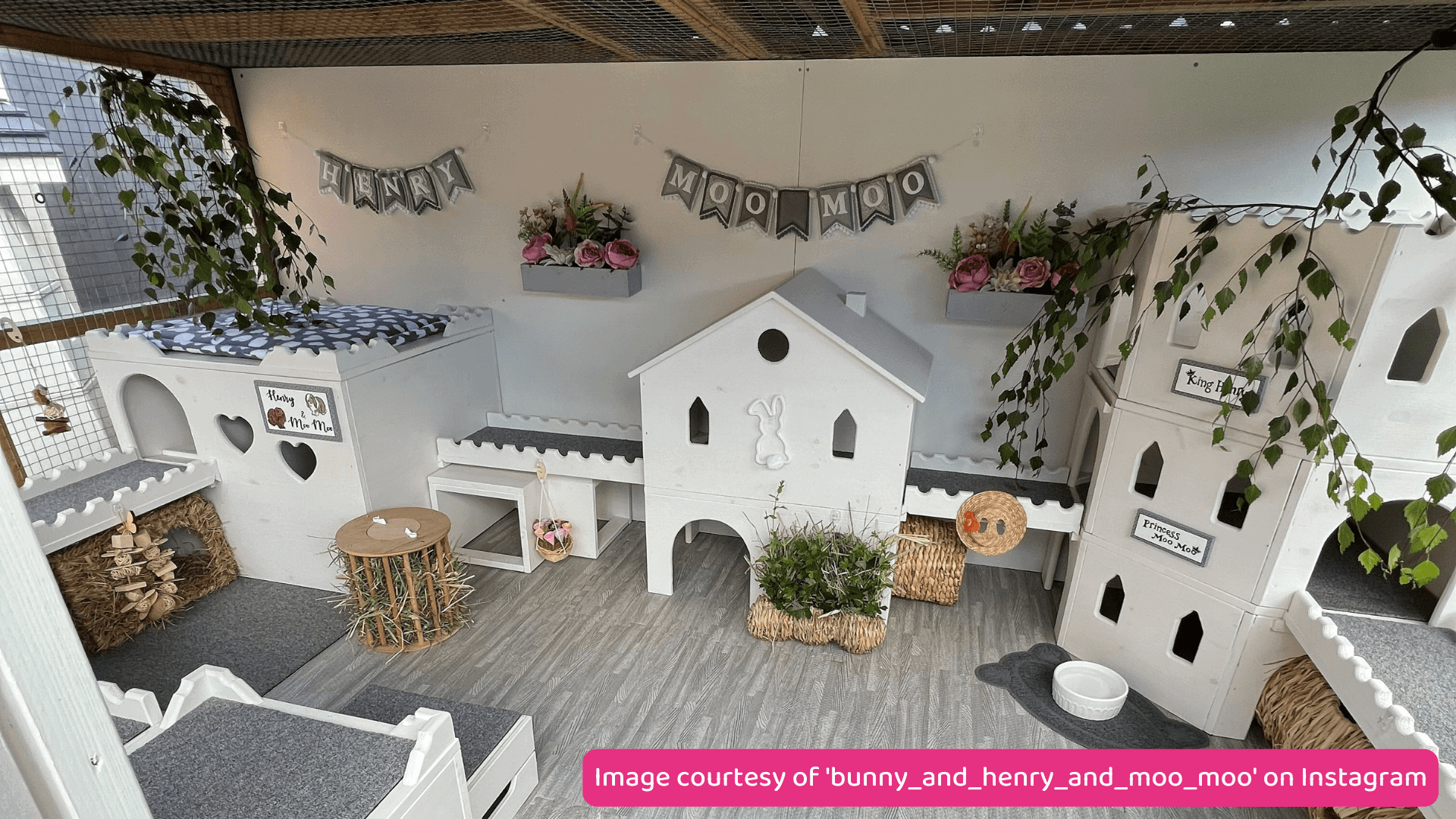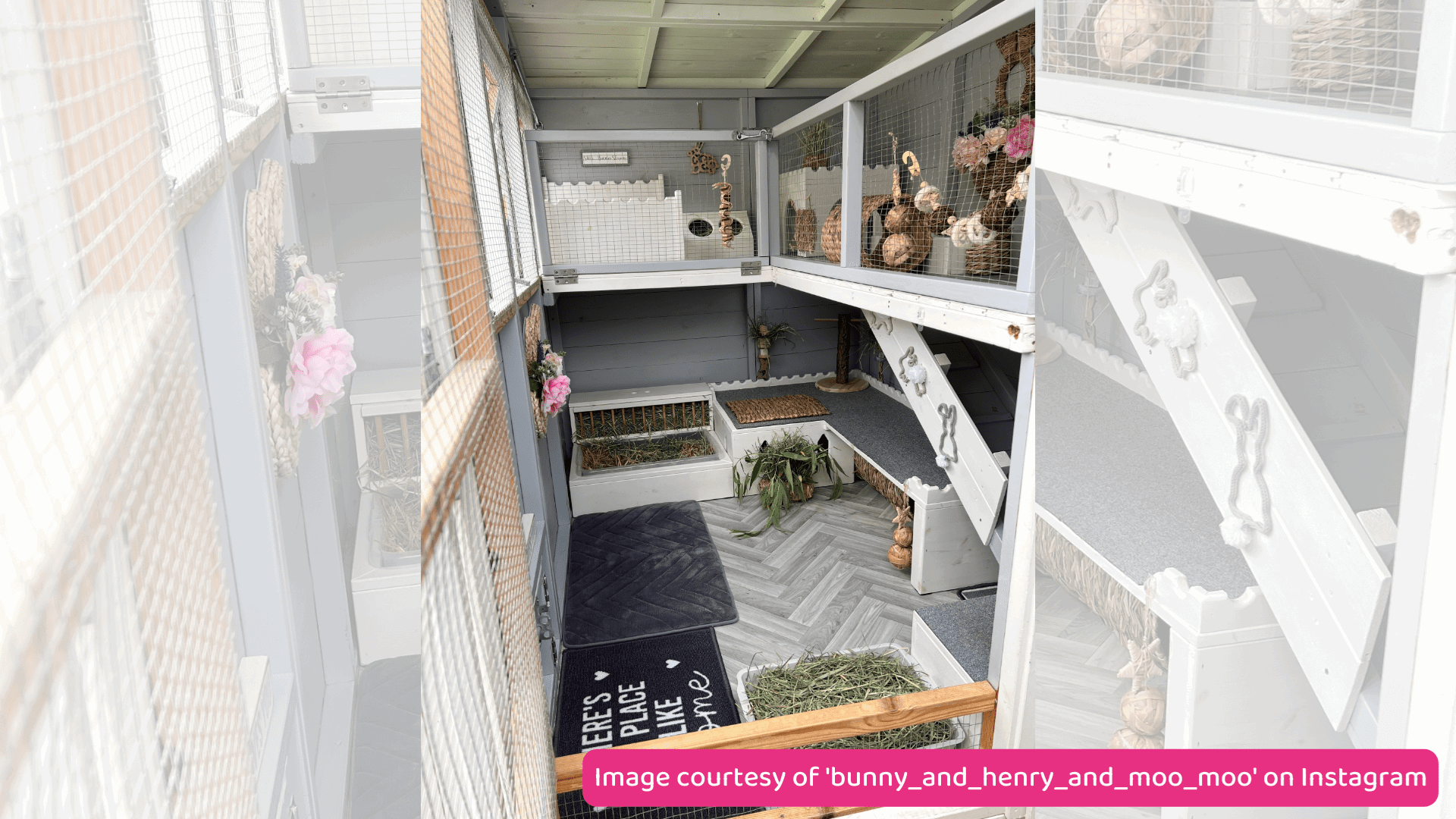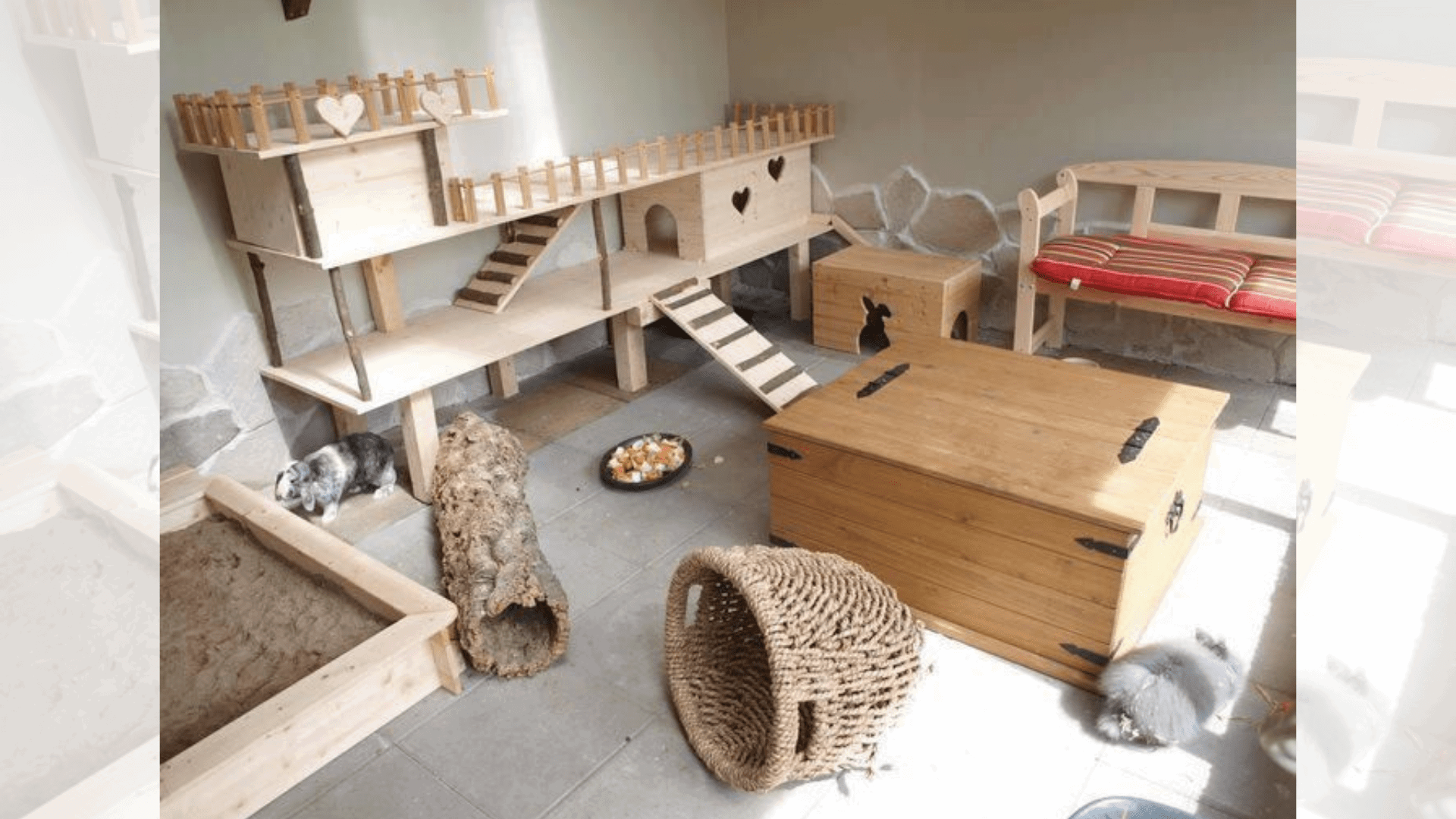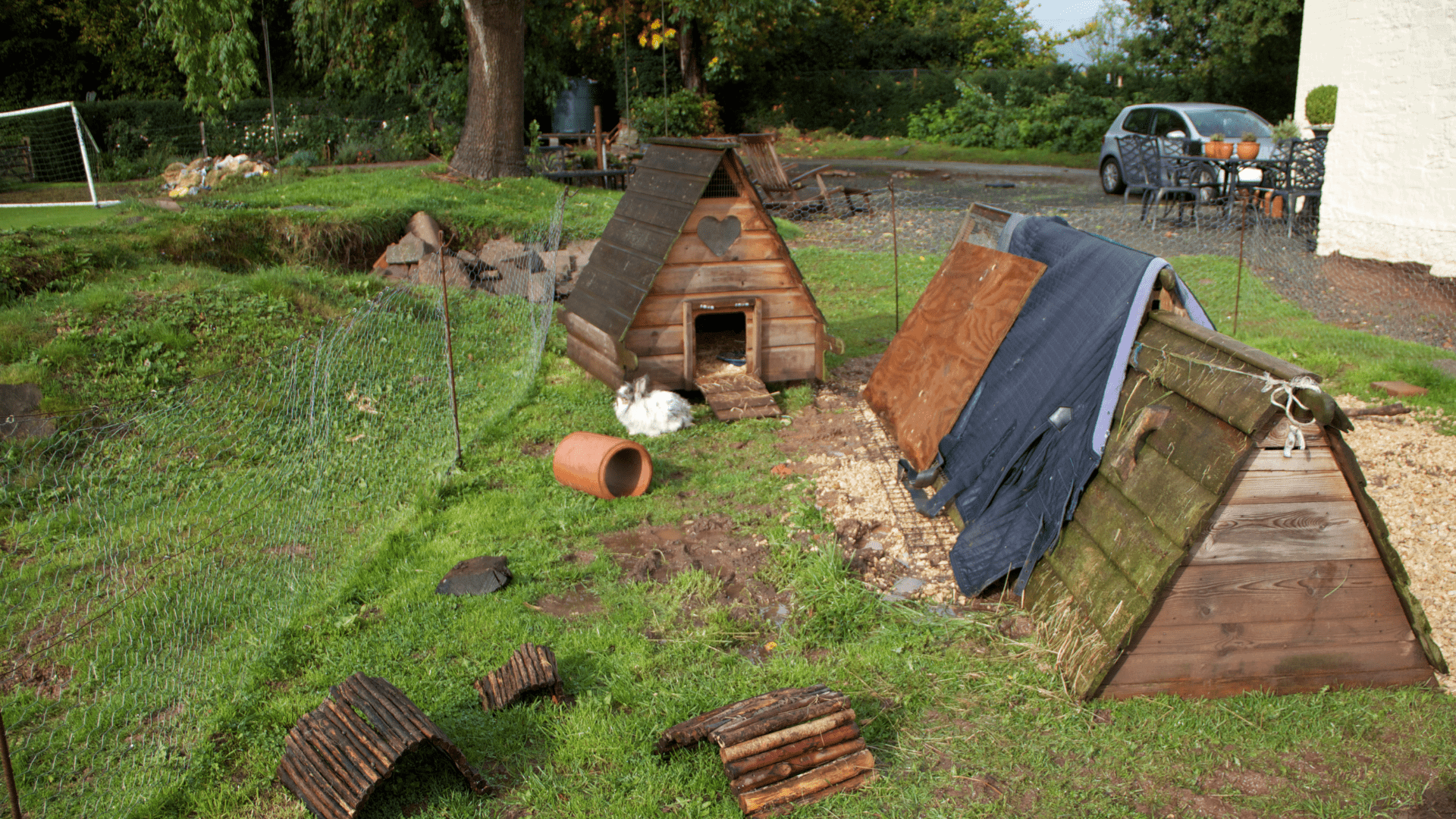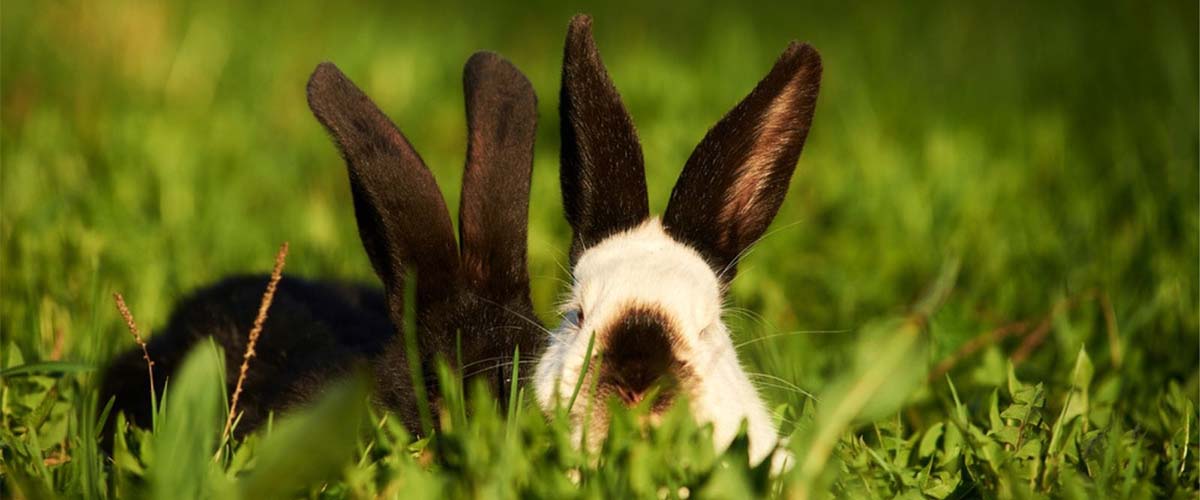
Creating the ideal home for your rabbits
Overview
- Your rabbits’ environment has a huge impact on their health and wellbeing, so the better their living space, the happier they’ll be!
- Rabbits can live indoors or outdoors, but a hutch is not enough – they need lots of space and boredom busters to keep them busy and active.
- Rabbits are also very sociable, so it’s essential that they live in neutered pairs or groups.

- Your rabbits’ living space should be as big as possible! When you think how rabbits live in the wild, it’s obvious why bigger is better.
- 10ft x 6ft x 3ft/3m x 2m x 1m is the absolute minimum recommended space for a pair of rabbits, but we recommend providing much more than this.
- As a bare minimum it’s really important that your rabbits living space is large and tall enough for them to:
- Run around
- Jump as high as they want
- Lie down/fully stretch out
- Stand up on their back legs without their ears touching the top of their living space.
- The more space you can provide, the happier your rabbits will be.
Rabbits can live outdoors or indoors, but a hutch is not enough. Their home should consist of:
- A shelter such as a hutch, shed, Wendy house, or room indoors. This is where your bunny will relax, sleep, eat, and drink, and should be:
- Large enough for your rabbits to sprint, fully stretch out and stand up without their ears touching the top. This usually works out as at least around 3m x 2m x 1m/10ft x 6ft x 3ft (depending on the size of your rabbit), but we recommend providing much more than this.
- Sturdy, waterproof, and raised from the ground to keep them dry on rainy days.
- In the shade to keep them cool and prevent heatstroke on warm summer days – read more about heatstroke in rabbits.
- Warm and insulated in the winter. If not, you’ll need to use an insulated cover or be prepared to move them somewhere warmer during cold winter days – read more about keeping rabbits warm in cold weather.
- A large exercise area that they can use at all times – such as a run, secure area in your garden, or space in your home. Whether it’s indoors or outdoors, this area needs to be:
- Accessible at all times so they can choose when to use it – rabbits are most active at dawn and dusk.
- Free from anything dangerous or toxic e.g. wires, cables, houseplants, toxic garden plants, cleaning products and small ornaments.
- Large enough for your rabbits to sprint, fully stretch out and stand up without their ears touching the top. This usually works out as at least around 3m x 2m x 1m/10ft x 6ft x 3ft (depending on the size of your rabbit), but we recommend providing much more than this.
- Outdoor space – all bunnies (even if they mainly live indoors) need regular access to the outdoors so they get enough daylight and vitamin-D. Make sure your bunnies outdoor enclosure has the following:
- Water, hay and toys, so they don’t get thirsty, hungry or bored.
- Places for them to dig, hide and explore, such as exposed soil, tubes and boxes.
- A grassy area, so they can nibble as much as they want.
- Shade, to keep them cool on warm days.
- Under cover areas, to protect them from rain and wind.
- A companion (or two) – rabbits are very sociable animals that should never be kept alone. It’s vitally important that they have the company of at least one other rabbit to stop them getting bored and lonely. We recommend keeping neutered pairs (ideally one male and one female). Read more about giving your rabbits the company they need and neutering your rabbits.
- Toys and enrichment – pet rabbits can get bored easily, so you’ll need to give them places to dig, hide and explore. Tunnels, boxes, balls, and a large litter tray full of soil will keep them entertained for hours! Another benefit of keeping your rabbit busy is that they are much less likely to chew their hutch/run or household items. Read more about preventing boredom in rabbits.
- Dry, clean bedding – your rabbits need comfortable, absorbent, clean bedding such as newspaper, wood based cat litter pellets, and soft straw. Read more about the best bedding for rabbits and keeping your rabbits’ home clean.
- A litter tray – rabbits are clean animals and can be trained to use a litter box. Start by introducing the litter tray to their favourite toileting area, clean it out daily and be sure to use a bunny safe litter.
- At least one water bowl per rabbit – monitor their water bowl as it may become soiled, clean it thoroughly and replace with fresh water.
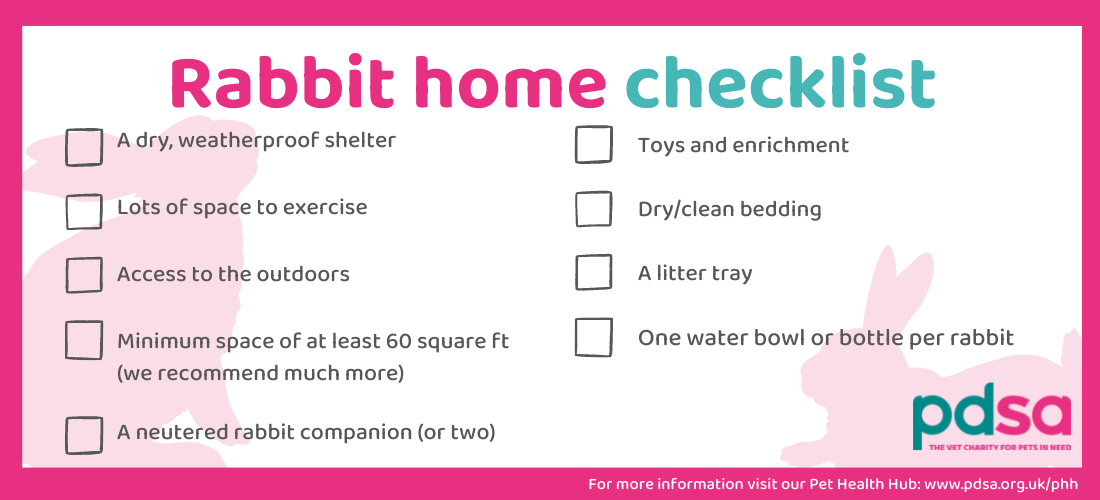
What bedding is best for my rabbits?
The best bedding for rabbits is newspaper topped with a layer of wood-based, dust extracted cat litter pellets*, which should then be topped with a layer of soft straw for warmth and comfort. Your rabbits will need extra bedding straw during the winter months to keep them warm.
*always read the label to make sure the wood pellets are dust free and don’t contain silicone.

To keep your rabbit happy, healthy, and free from disease, you’ll need to clean their home daily, deep clean it once a week, and protect your rabbits from flying insects. This is especially important during warm weather, when rabbits’ are at risk of flystrike.
- Daily clean: Remove wet/dirty shavings or bedding, throw out uneaten greens and pellet food and replace it with fresh. Clean any bowls with soapy water/a pet-safe cleaner/the dishwasher, and rinse/dry them before refilling them.
- Deep clean: Take everything out and scrub it with pet-safe cleaner. Make sure everything is completely dry before replacing their bedding.
- Insect protection: It’s important to protect your rabbits from flying insects that can cause flystrike, and transmit diseases such as Myxomatosis, and Rabbit Haemorrhagic Disease. Fly screens or mesh can help reduce the amount of insects your rabbits come into contact with.
Top tips:
- You may find it easier to keep your rabbits’ home clean, by keeping their sleeping, food and toilet areas separate.
- Rabbits like to ‘chew and poo’, so putting an extra hay rack next to their litter tray or covering it with a layer of feeding hay, might encourage them to use it, making them easier to clean out.

